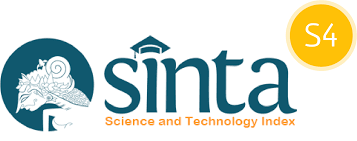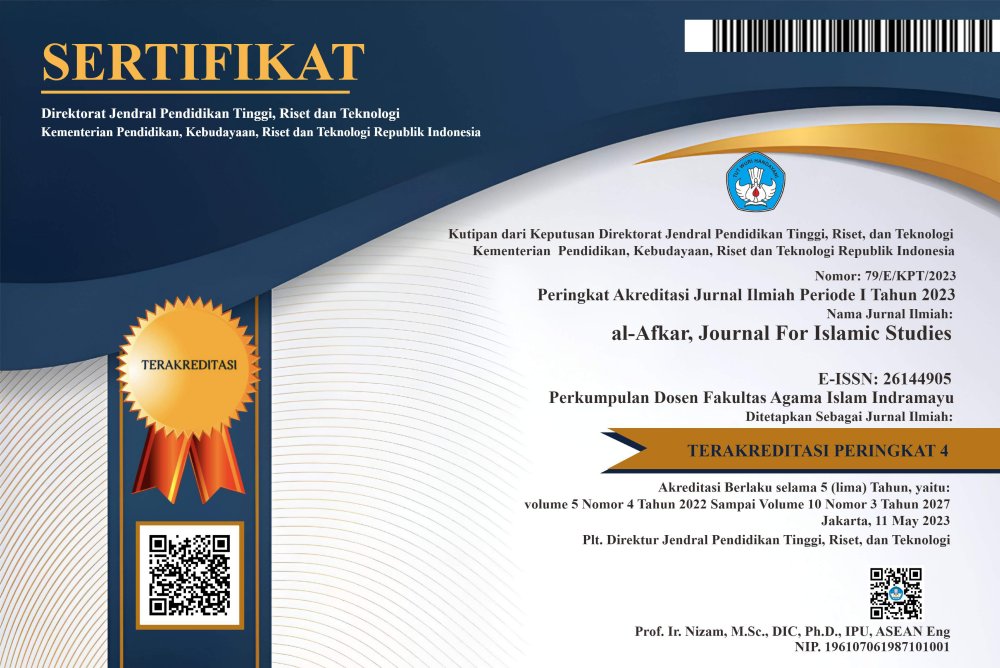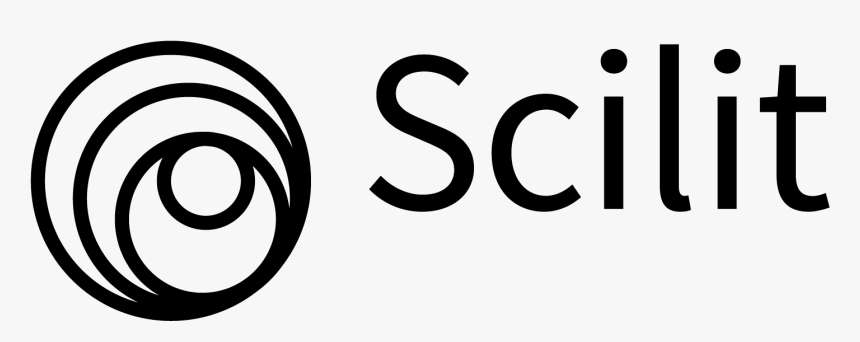Utilization of Learning Media in Increasing PAI Motivation and Learning Outcomes at Attin Middle School, Kupang City
DOI:
https://doi.org/10.31943/afkarjournal.v7i3.1140Keywords:
Learning media, Islamic Education, Increased motivation and learning outcomeAbstract
This study discusses instructional media’s use in increasing motivation and learning outcomes of Islamic Religious Education in Schools and Madrasas. Learning media is an important thing used by teachers to attract interest and foster student motivation in learning, mainly Islamic religious subjects. Students quickly understand the material presented without feeling bored and tired of listening to the teacher’s submission. With the aim, PAI learning materials can be understood and practiced by students after studying at school and madrasa. The method used in this research is quantitative. The findings state that Rasulullāh is an excellent educator who has also used various forms of media in conveying Islamic education to friends so that friends can understand the teachings of Islam properly and correctly. The study results show that learning media can provide an increase in student motivation, greatly assisting teachers in implementing the teaching and learning process to achieve the objectives of learning material. The use of instructional media can also provide a significant influence in improving student learning outcomes in PAI learning in schools and madrasah.
Downloads
References
Abdoulaye, B., Rozy, Y. F., & Konate, A. S. (2023). MUHAMMAD IBN ABDUL WAHHAB’S PERSPECTIVE ABOUT THE VERSES OF THE QUR’AN REGARDING THE SCIENCE OF THEOLOGY. QiST: Journal of Quran and Tafseer Studies, 3(1), 57–74. https://doi.org/10.23917/qist.v3i1.2913
Abulmajd, A. (2023). WHAT IS THE MODEL OF MUSLIM RELATIONS WITH THE KAABA FROM THE PERSPECTIVE OF THE QUR’AN. QiST: Journal of Quran and Tafseer Studies, 3(1), 107–145. https://doi.org/10.23917/qist.v3i1.3583
Adiansyah, R., Sofia, A., Bensar, M., Adams, A., & Barakat, M. A. (2023). ROLAND BARTHES SEMIOTIC STUDY: UNDERSTANDING THE MEANING WORD OF ’AZAB, A REINTERPRETATION FOR MODERN SOCIETY. QiST: Journal of Quran and Tafseer Studies, 2(3), 255–274. https://doi.org/10.23917/qist.v2i3.1445
AN, A. N., Suri, S., Akhyar, S., Amin, M., Hidayat, S., & Junaedi, D. (2023). Exploration of Wasatiyah Diction to Realize Sustainable Tolerance Between Religious Communities: A Study of the Translation of the Quran of the Ministry of Religious Affairs of The Republic of Indonesia. Journal of Law and Sustainable Development, 11(12), e2148. https://doi.org/10.55908/sdgs.v11i12.2148
Anurogo, D. (2023). Ecofeminism 5.0. Multicultural Islamic Education Review, 1(1), 36–51. https://doi.org/10.23917/mier.v1i1.2828
Anurogo, D., Hardin La Ramba, Nabila Diyana Putri, & Ulfah Mahardika Pramono Putri. (2023). Digital Literacy 5.0 to Enhance Multicultural Education. Multicultural Islamic Education Review, 1(2), 109–179. https://doi.org/10.23917/mier.v1i2.3414
Anurogo, D., Sasmita, N. S., Syarif, U. A., Awaliah, N. R., Rachman, B. M., & Jia Yi Wang (王 家儀), J. Y. W. (2023). The Art of Healthy Neurophilocommunication. Multicultural Islamic Education Review, 1(2), 63–82. https://doi.org/10.23917/mier.v1i2.2893
Arif Wicagsono, M., Muhammad Hamad Al-Nil, B. M. A., & Muthoifin. (2023). Strategies for Improving Teacher Pedagogic Competence Industrial Revolution Era 4.0. Multicultural Islamic Education Review, 1(1), 15–25. https://doi.org/10.23917/mier.v1i1.2816
Fadli, N. (2023). CONTRIBUTION OF ACEHNESE SCHOLARS TO THE DEVELOPMENT OF QURANIC EXEGESIS IN INDONESIA: A STUDY OF TENGKU MUHAMMAD HASBI ASH-SHIDDIEQY AND HIS WORK “TAFSIR AN-NUUR.” QiST: Journal of Quran and Tafseer Studies, 3(1), 1–22. https://doi.org/10.23917/qist.v3i1.3381
Mahmudulhassan, M., Waston, W., & Nirwana AN, A. (2023). The Rights and Status of Widows in Islam: A Study from the Perspective of Multicultural Islamic Education in the Context of Bangladesh. Multicultural Islamic Education Review, 1(1), 01–14. https://doi.org/10.23917/mier.v1i1.2674
Marthoenis, M., Nirwana, A., & Fathiariani, L. (2019). Prevalence and determinants of posttraumatic stress in adolescents following an earthquake. Indian Journal of Psychiatry, 61(5), 526. https://doi.org/10.4103/psychiatry.IndianJPsychiatry_35_19
Munandar, S. A., & Amin, S. (2023). Contemporary Interpretation of Religious Moderation in the Qur’an: Thought Analysis Quraish Shihab and Its Relevance in the Indonesian Context. QiST: Journal of Quran and Tafseer Studies, 2(3), 290–309. https://doi.org/10.23917/qist.v2i3.1448
Nugroho, K., Kiram, M. Z., & Andriawan, D. (2023). THE INFLUENCE OF HERMENEUTICS IN DOUBLE MOVEMENT THEORY (CRITICAL ANALYSIS OF FAZLURRAHMAN’S INTERPRETATION METHODOLOGY). QiST: Journal of Quran and Tafseer Studies, 2(3), 275–289. https://doi.org/10.23917/qist.v2i3.2531
Nurmansyah, I., Oktaviana, S. K., & Azid, M. A. A. (2023). HUMAN PIG HEART TRANSPLANT: APPLICATION OF ABDULLAH SAEED’S CONTEXTUAL APPROACH TO QS. AL MAIDAH VERSE 3. QiST: Journal of Quran and Tafseer Studies, 2(2), 238–254. https://doi.org/10.23917/qist.v2i2.1469
Parwanto, W., & Engku Alwi, E. A. Z. (2023). the Pattern of Sufism on Interpretation of Q.S. Al-Fatihah in the Tafsir Manuscript By M. Basiuni Imran Sambas, West Kalimantan. QiST: Journal of Quran and Tafseer Studies, 2(2), 163–179. https://doi.org/10.23917/qist.v2i2.1472
Ridha, I., Zinah, M. M. A., Subhi, M., & Nasir, M. (2023). THE QUR’AN’S STATEMENT ABOUT THE ETIQUETTE OF DEALING WITH THE HOLY QUR’AN FROM SAYYID QUTB’S PERSPECTIVE IN HIS INTERPRETATION OF (ADH-DHILAL): AN ANALYTICAL STUDY. QiST: Journal of Quran and Tafseer Studies, 3(1), 40–56. https://doi.org/10.23917/qist.v3i1.2874
Rizal Munir, D., Maftuhah, M., Najmi, I., Amin, S., & Bensar, M. (2023). Singing Methods to Improve College Students’ Arabic Vocabulary. Multicultural Islamic Education Review, 1(1), 52–62. https://doi.org/10.23917/mier.v1i1.2677
Rohman, A., Mubaroka, B., & Butlam, Q. (2023). Methodology of Tafseer Al-Qurtubi: Sources, Styles and Manhaj. QiST: Journal of Quran and Tafseer Studies, 2(2), 180–202. https://doi.org/10.23917/qist.v2i2.1451
Romadhona, A., Apriantoro, M. S., & Rasyid, L. M. (2023). EXPLORING THE DISTINCTIVE FEATURES OF INDONESIAN TAFSIR AL-QURAN: A STUDY OF SHEIKH ABDUL LATIF SYAKUR’S AD-DA’WAH WA AL-IRSYĀD ILĀ SABĪLI AR-RASYĀD. QiST: Journal of Quran and Tafseer Studies, 3(1), 91–106. https://doi.org/10.23917/qist.v3i1.2912
Rozy, Y. F., Matsuyama, Y., & Sijamhodžić-Nadarević, D. (2023). THE DEVELOPMENT OF QUR’AN COMMENTATORS’ REQUIREMENTS: FROM THE AFFIRMATIVE ERA TO THE REFORMATIVE ERA. QiST: Journal of Quran and Tafseer Studies, 3(1), 75–90. https://doi.org/10.23917/qist.v3i1.2910
Saprudin, U., Junaedi, J., Kerwanto, K., & Anurogo, D. (2023). LIMITING THE NUMBER OF POLYGAMIES TO REALIZE ECONOMIC JUSTICE: A HERMENEUTIC ANALYSIS OF MUHAMMAD SYAHRUR. QiST: Journal of Quran and Tafseer Studies, 2(3), 347–368. https://doi.org/10.23917/qist.v2i3.2769
Sule, M. M. (2023). RESPONSE TO MUSLIMS DA’WAH ACTIVITIES’ BY NON-MUSLIMS IN AKWANGA AND NASSARAWA EGGON LOCAL GOVERNMENT AREAS OF NASARAWA STATE, NIGERIA. QiST: Journal of Quran and Tafseer Studies, 3(1), 23–39. https://doi.org/10.23917/qist.v3i1.3110
Tobroni, T., Firmansyah, E., Rajindra, R., & Fadli, N. (2023). Spirituality as a Paradigm of Peace Education. Multicultural Islamic Education Review, 1(1), 26–35. https://doi.org/10.23917/mier.v1i1.2813
Wahid, A., Ibrahim, M., Shomad, B. A., Nirwana AN, A., & Damanhuri, D. (2023). UTILIZING ZUHD HADITHS FOR UPPER-CLASS CRIME PREVENTION. Jurnal Ilmiah Islam Futura, 23(2), 263–282. https://doi.org/10.22373/jiif.v23i2.17353
Wiranto, E. B., Suranto, Muhammad Maga Sule, & Nagoor Gafoordeen. (2023). The Baseline of Multicultural Education: An Examination from Islamic and Buddhist Standpoints. Multicultural Islamic Education Review, 1(2), 96–108. https://doi.org/10.23917/mier.v1i2.2895
Yahya, A. M., Hasan, M. A. K., & AN, A. N. (2022). Rights Protection Guarantee for the Partners of Indonesian Gojek Company according to Labour Laws no 13 of 2033 and Maqasid. Al-Manahij: Jurnal Kajian Hukum Islam, 16(1), 115–132. https://doi.org/10.24090/mnh.v16i1.6382
Abdullah, R. (2016). al-Wasa’il al-Ta’limiyyah fi Ta’lim al-Lughah al-’Arabiyyah Linnathiqina bi Ghoiriha [Teaching Media in the Teaching of Arabic Language to Non-Native Arabic Speakers]. Dinamika Ilmu, 16(1), 93–106.
Al-Abrasyi, M. ’Athiyyah. (1988). al-Tarbiyyah al-Islamiyyah wa Falasifatuha. Dar al-Fikr al-’Araby.
Arsyad, A. (2003). Media Pembelajaran. Raja Grafindo Persada.
Bahruddin, U. (2011). Maharat At-Tadris. UIN Maliki Press.
Darling-hammond, L., Flook, L., Cook-harvey, C., Barron, B., & Osher, D. (2020). Implications for educational practice of the science of learning and development. Applied Developmental Science, 24(2), 97–140. https:// doi.org/10.1080/10888691.2018.1537791
Darsih, E. (2018). Learner-Centered Teaching: What Makes It Effective. Indonesian EFL Journal, 4(1), 33–42. https://doi.org/10.25134/ieflj. v4i1.796
Dryden, G., & Vos, J. (2003). Revolusi cara belajar (the learning revolution): belajar akan lebih efektif kalau Anda dalam keadaan “fun” bagian II: sekolah masa depan (Issue 2). Kaifa.
Ernanida, & Yusra, R. Al. (2019). Media Audio Visual Dalam Pembelajaran PAI. Al Murabbi: Jurnal Pendidikan Islam, 2(1), 101–112. https://doi. org/10.35891/amb.v5i1.1854
Faizi, R., El Afia, A., & Chiheb, R. (2013). Exploring the Potential Benefits of Using Social Media in Education. International Journal of Engineering Pedagogy (IJEP), 3(4), 50–53. https://doi.org/10.3991/ijep.v3i4.2836
Hoidn, S. (2016). The Pedagogical Concept of Student-Centred Learning in the Context of European Higher Education Reforms. European Scientific Journal, ESJ, 12(28), 439–458. https://doi.org/10.19044/esj.2016. v12n28p439
Layla, S. (2016). Dawr al-Wasa’il fi al-’Amaliyyah al-Ta’limiyyah. Al-Atsar, 26(September), 145–154. https://doi.org/10.35156/1174-000-026-014
Mostefa, N. (2017). al-Wasa’il al-Ta’limiyyah al-Haditsah wa Ahamiyatuha fi Tadris al-Lughah al-’Arabiyyah fi al-Thur al-Tsanawy. Jasur Al-Ma’rifah, 10, 547–562.
Ritonga, M., Nazir, A., & Wahyuni, S. (2020). Pengembangan Model Pembela- jaran Bahasa Arab Berbasis Teknologi Informasi & Komunikasi dalam Di- alektika Revolusi Industri 4.0. Deepublish. https://books.google.co.id/ books?hl=id&lr=&id=OEXYDwAAQBAJ&oi=fnd&pg=PP1&ots=s- br9Fjm t&sig=gqKsqW7fcokp_ya5MQd1zMZfQGE&redir_es- c=y#v=onepage&q&f=false
Rofi’i, A. (2019). Metode Rasulullah dalam Pendidikan Karakter Perspektif Al--Qur’an. KORDINAT, XVIII(1), 49–74. https://doi.org/10.1017/ CBO9781107415324.004
Downloads
Published
How to Cite
Issue
Section
License
Copyright (c) 2024 Syarif Mamang, Mutohharun Jinan, Syamsul Hidayat, Hafidzd

This work is licensed under a Creative Commons Attribution 4.0 International License.



















